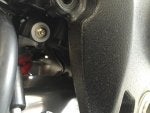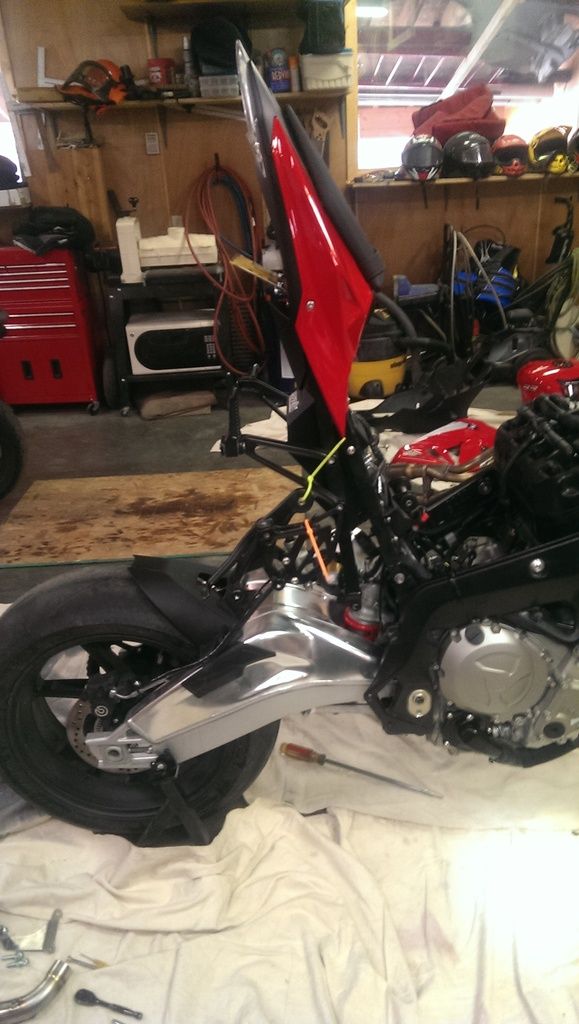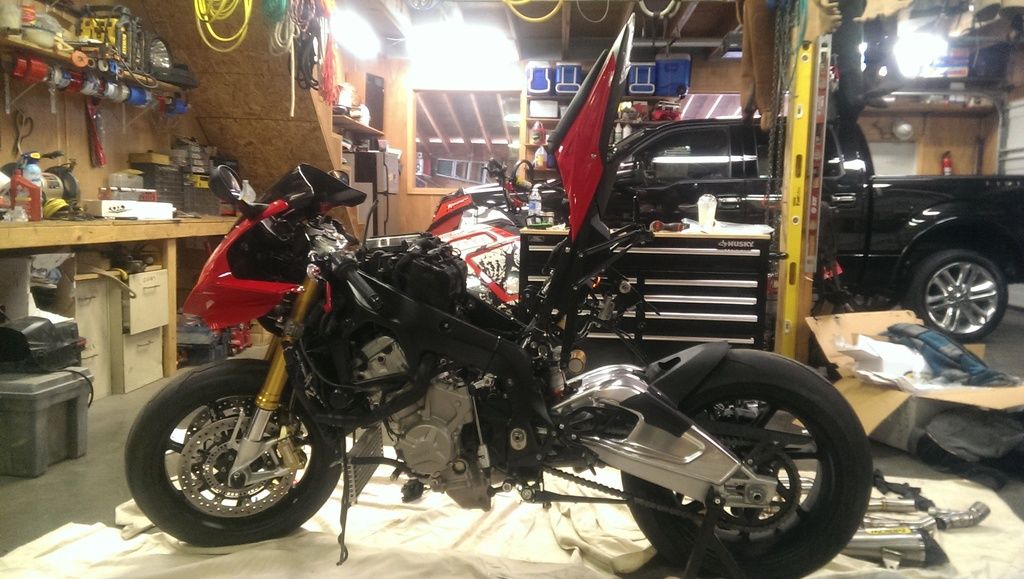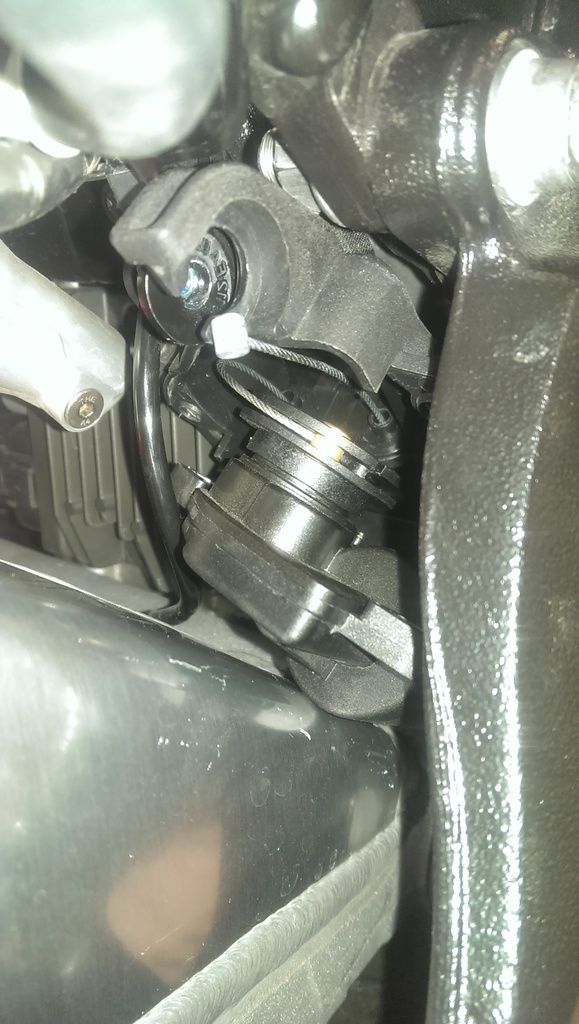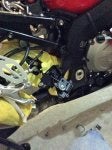If you disconnect the servo just before the mid pipe you will get a much deeper tone out of the exhaust at slow speed to idle. It will be louder by a noticeable amount. The stock exhaust sounds great until to hear the servo valve full open while at idle. The servo really wakes up the at idle sound. You can feel the exhaust on your chest more. Its just an easy mod that will hold you over until a few pipes come out. The video was from a phone so its hard to hear but if you want more sound even after the baffle then the servo is next and last for the stock exhaust.
https://www.youtube.com/watch?v=A-cL1sBxyPA&feature=youtu.be
How to!
1. remove metal clip from plastic cover. I used a flat head screw driver and pushed the clip to the front of the bike.
2. pull plastic cover off. Its a very brittle part so be easy. I broke an ear off of it. Im lucky in that you cant see where i broke it. It should pull off easy.
3. Use a wrench to loosen the nuts on the top side of the cable housing tubes. Dont move the lower nuts just the upper ones.
4. Pull the cable housing tubes off the bracket and remove the cable from the servo wheel.
5. Replace the cable housing tubes back on the bracket and tighten the top nuts back down.
6. Replace the palstic cover and metal clip.
DONE- Its that easy. I did it before work today. Took more time to make this video then the mod took.
https://www.youtube.com/watch?v=A-cL1sBxyPA&feature=youtu.be
How to!
1. remove metal clip from plastic cover. I used a flat head screw driver and pushed the clip to the front of the bike.
2. pull plastic cover off. Its a very brittle part so be easy. I broke an ear off of it. Im lucky in that you cant see where i broke it. It should pull off easy.
3. Use a wrench to loosen the nuts on the top side of the cable housing tubes. Dont move the lower nuts just the upper ones.
4. Pull the cable housing tubes off the bracket and remove the cable from the servo wheel.
5. Replace the cable housing tubes back on the bracket and tighten the top nuts back down.
6. Replace the palstic cover and metal clip.
DONE- Its that easy. I did it before work today. Took more time to make this video then the mod took.


